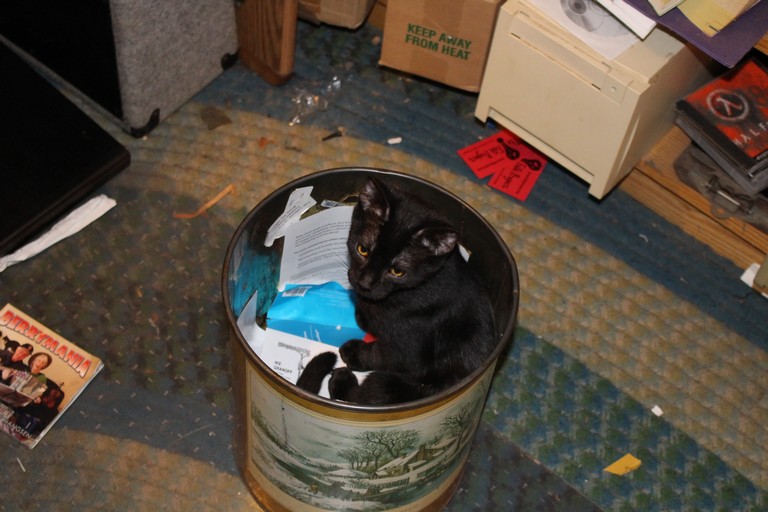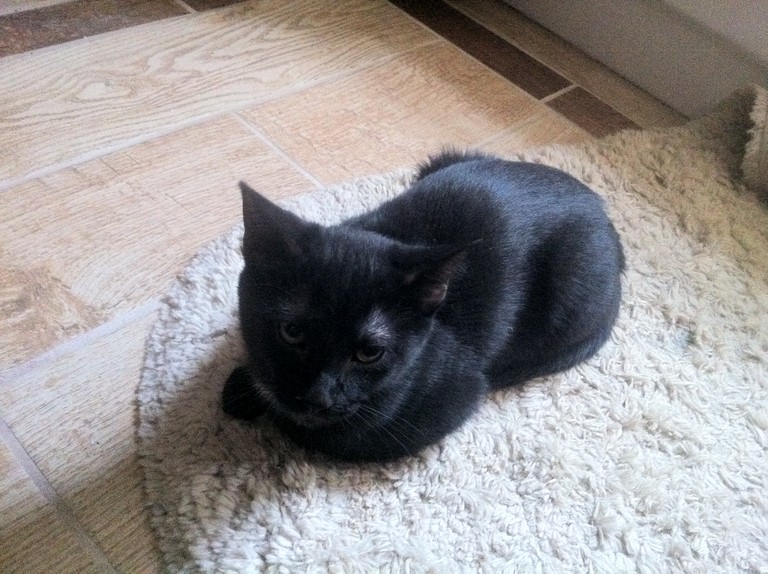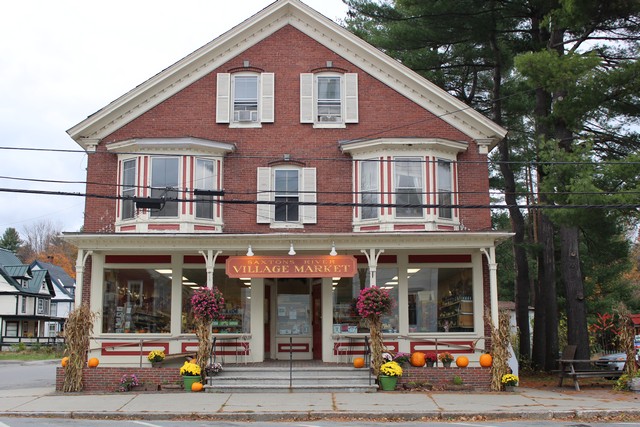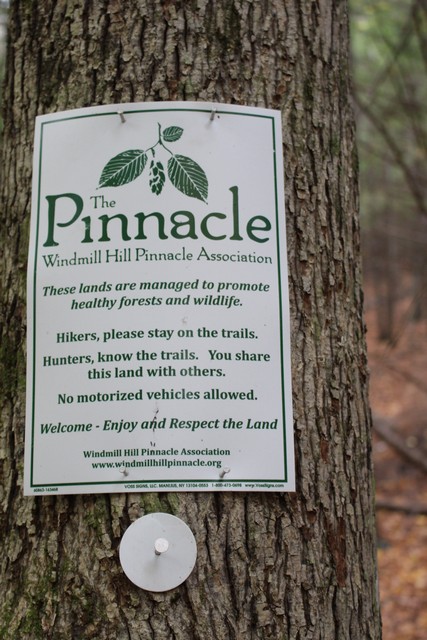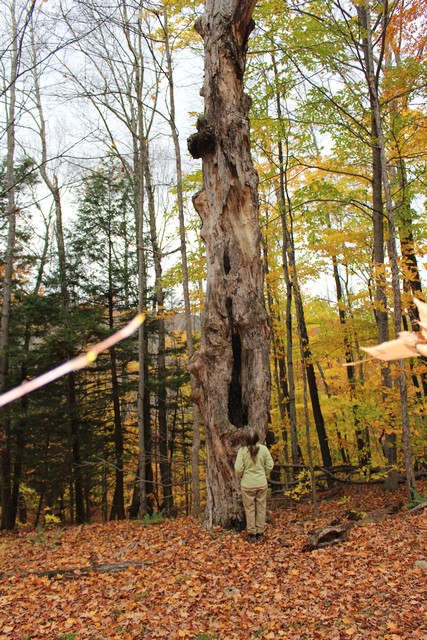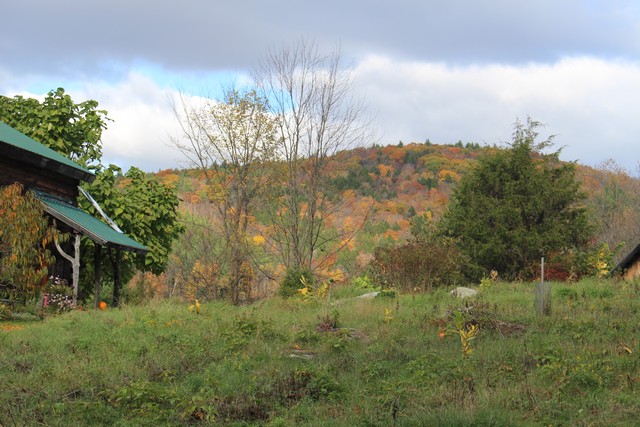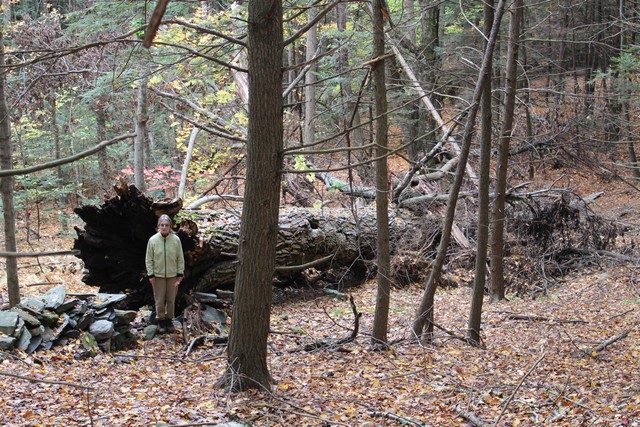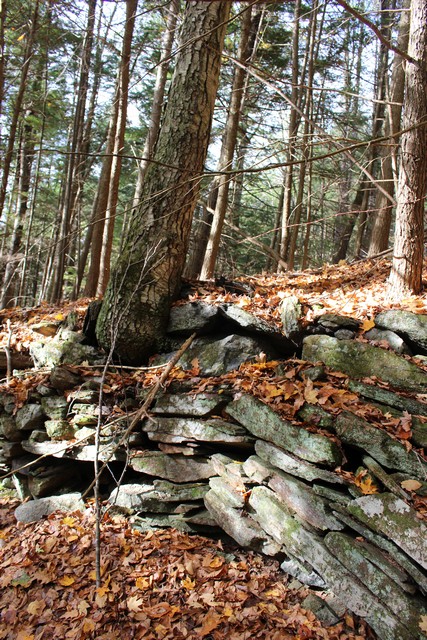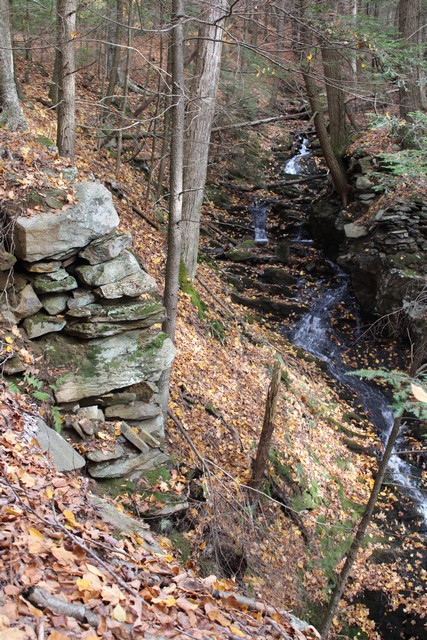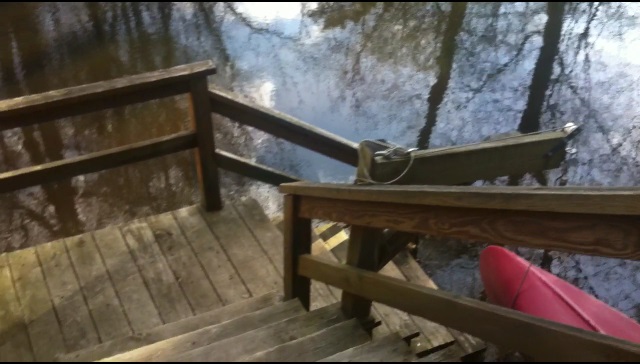December 19, 2014
Keira
It's been 2 years since Sasquatch died. (See Blog entry of December 21, 2012.) I was ready for another cat. I went to the Montville Animal Shelter with no real preconceptions of what I was looking for, other than a kitten, preferrably male, preferrably shorthair. I perused the inmates, paying less attention to what they looked like, and more to how they reacted to me. Most were pretty sociable, and there was a pair in one cage, a brother and sister, who looked a lot like Sasquatch: all black, and shorthair. One of them was purring loudly at my attention. I took it out of the cage and sat with it a while. It was quite happy to be handled and petted, and showed no fear or reluctance. OK. That's the one. Turned out, it was the female, named Keira. (After Keira Knightly. She was originally one of a trio. The third one had an infection in one eye, which had to be removed, and was therefore named Pirate, and subsequently adopted. The other two were named after characters and actors in the movie (Pirates of the Carribean".) I had renamed previous cats. Sasquatch, for instance, had come from the Shelter with the name Dennis. But no other name presented itself, so Keira it is.
She's a keeper. She adapted very quickly to my home. Showed no proclivity to hide herself in secret places, and is delighted to keep me company. And like all kittens, she is endlessly entertaining to me and to herself. But in particular, and to my delight, she instinctively understands the limits of play. With toys or a bit of string, she is ferocious. But with one's hand, even in the wildest throes of battle, she never extends her claws. I think we have a match. I just hope that in 15 years, I won't have to worry about keeping her meds and mine straight.
|
|
Post Script, December 24, 2014: Today, Keira caught her first mouse. Functional as well as decorative. And she's taken to sleeping with me under the covers. Yep. She's a keeper.
So tonight, it all came to a head. A gala concert to celebrate the release of my 4th CD, Straight Lines, at the Minstrel. A lot went into that one event, not the least of which was the making of the CD itself. It was gestation at once satisfying and frustrating, one that gave me pride and a little private guilt, one I looked upon with joy, and a little melancholy in the realization that this might be my last. I come out with new CDs roughly once every 7 years. I gather material slowly. And, as time goes on, it becomes harder and harder to satisfy my own rising standards. I will confess that there are some tracks on this CD that I consider "filler" material. I'll leave it to you to guess which ones. (And 7 years from now, I'll be 76 years old.) But let's see what happens. I'm a better singer and a better guitarist than I was 7 years ago. And that's a pretty good thing to say for someone my age.
The impetus to make the CD came primarily from boredom, if you can believe that. I'd been out of work for 2-1/2 years in April when I took on the project. And I was having trouble filling my days with productive activity. I really enjoyed the recording process. I'm a good musician, but not a great one. Any live performance I give is flawed to one extent or another. Usually, I'm the only one who can hear those flaws. I know that, but it still bothers me. Countless times, I will wish there was a "Do-Over" button I could push to take another shot at it. Well, in the studio there are a whole array of "Do-Over" buttons. And "Do-Better" buttons. So at the end of the process, the result is the best of all possible Mike Agranoffs. And I can present that best-of all-possibles to the world (and to myself) as the real me. Yes, I do feel a bit of a charlatan. But in theory, if you catch me on the right day, maybe I can equal or better the performance of the recording. So I'm not a complete charlatan.
Unlike my previous CDs, I really didn't have a clear idea of what I wanted to put on it at the outset. Oh there were a few songs in my concert repertoire which I hadn't yet recorded that were on my list: "Deeper Waters" and "The Kid With The Comic Book", f'rinstance. What became the title track, "Straight Lines / Road Jigs", could benefit from the recording process by adding an ensemble to the jigs, which I usually perform solo on concertina. But what else? I had one unrecorded recitation, "The Ballad of Captain Crunch". I rarely perform that, because I think my other recitations are better. But that would be a good addition."Sing That Stephen Foster Song" I learned specifically for the album, and I've subsequently come to love it for live performance. My recent association with the harmony trio Gathering Time impelled me to add "City of New Orleans" and "The Mary Ellen Carter", which I play a lot in jams, song-circles, and other social situations, but wouldn't otherwise have felt strong enough to put on a recording in solo performance. There were some songs I considered that I don't perform live because I can't do them solo : "Iowa Pot" and the Brandenburg became projects for the album.
Those projects became pretty significant ones. For the vocal arrangement on Iowa Pot, I bought and learned a new piece of software called "Melody Assistant", introduced to me by my friend Ken Rolston (who, along with his wife Pat, also sang on "Stephen Foster Song"). It's a music composition program like Finale or Sebelius with the added feature of actually singing the lyrics in computer-generated voices. (And remarkably inexpensive, too.) The 2-concertina Brandenburg arrangement was one I wrote about 25 years ago, and performed a couple of times live against a recording of myself playing the other concertina part and Liz Cabrera playing cello. I wasn't a good enough player at the time to pull off that trick reliably, so I had dropped it from my repertoire. Alas, I only had a cassette copy of the other part, and the master recording had disappeared. I did have my handwritten score, however, which I inputted into Melody Assistant, and then further refined. I then had to re-learn both parts on the concertina. All together, counting my initial transcription 25 years ago, I probably put 200 to 300 hours into that project.
Gathering Time made some significant contributions to the recording. But they also were one of the major impediments to its progress. Not due to any fault of their own, lord knows. But their schedules, both as a group and individually, made it so nigh impossible to find times to rehearse and record. From the time I decided to do the project in April to our one marathon recording session on October 27, a week before the deadline for submission for manufacture, we were able to schedule only 2 rehearsals for the 4 songs to which they contributed. And frankly, it wasn't enough. Oh, the results weren't bad. But they could have been better, given more time to hone and polish.
Like my previous releases, the project was recorded at Mix-O-Lydian Studios. I had stumbled across Mix-O and its genius owner/engineer Don (Magic Flipper-fingers) Sternecker on my first CD in 1992 by looking in the phone book for a local studio. He was in Boonton at the time, about 10 minutes from me. And by sheer luck, he turned out to be the perfect man for the job. He had great facilities, great equipment, great ears, and a real feel for acoustic music. And what's more, he took a real shine to me and my music, and really put out to make the recordings representatives of the best of all possible Mike Agranoffs at a very modest price. Turns of fortune have led him to move the studio twice in the intervening years. And this latest project was done in his current location in Delaware Water Gap, PA, 45 miles from my home. All told, the project consumed 52 hours of studio time over 11 sessions, plus one remote session to record me in live performance at Bound For Glory in Ithaca, NY. How the hell did I ever produce a CD while I was holding a full time job?
The live recording was important for the project. While I can benefit from studio enhancements to patch technical flaws in my singing and playing, I always give my best performance before a live audience. The humorous tracks like "The Princess And The Frog", and "Older Than Everybody" really benefited from the audience reaction. And I deliver recitations like "The Ballad of Captain Crunch" best when I'm telling the story to real people in front of me. And those listeners before me inspired me to deliver live performances of "Urge For Going" and "The Kid With The Comic Book" that were better than the studio recordings of those songs already in the can. We ditched the studio tracks, and used the live tracks on the album. I was particularly proud of "Urge For Going", because I was still getting over a cold at the time of the recording; I can hear that in my voice. but my performance was as good as I could have ever done.
The CD Release Concert at the Minstrel went well. Most of the backup musicians, including all of Gathering Time, were able to be there to perform with me. Violinist Diane Perry was particularly welcome at the concert. (I always strive to be the worst musician on any of my recordings, and in Diane, I succeeded admirably in that. She is a brilliant conservatory-trained violinist and vocalist, primarily in the jazz field. But she is so flexible and adaptable that she can render just about any style of music at a virtuoso levels. She stepped in and did the fiddle part of the Road Jigs to perfection when Connor Dugan, who did the recording, could not make the Release Concert. At one point during the recording of "Stephen Foster Song", I asked her, "Could you play that same line in a lower register?" She did to perfection in a single take. She said, "I like a man that knows what he wants." I responded "I like a woman who can do what I want!") I pulled of the "music minus one" performance of the Brandenburg against the recording of myself without too many flubs. The material with Gathering Time came off well. My set ran a little long. But hell, I sleep with the guy who books the place, so I can get away with it☺.
October 19, 2014
Vermont In The Fall
I went up to visit Jenny in Putney, VT just a little past the peak of fall colors. While not up in the northernmost reaches of the state where they still chop down a sapling and whittle at it with a Bowie Knife when the need for a toothpick arises, she still proudly lives the New Englander's life of self-sufficiency. Home-grown vegetables and locally produced dairy and eggs, gravel road and dial-up internet, and content with it all. We took a hike up Bemis Hill in the Windmill Hill Pinnacle Association's region of protected woodlands. This organization buys up property to keep it undeveloped and preserve some wilderness in the mountians. They maintain some hiking trails, and permit no motorized vehicles except for trail maintenence.
She belongs to a group that organizes regular weekly tramps through the area, and in fact had one scheduled for the next day. But it was scheduled to be a half-day hike, and I wanted to head home before noon. And I was concerned I might not have the stamina to make such a hike. My concerns were well-grounded, as it turned out. The terrain was quite steep, and after an hour and a half, I was pretty well knackered and ready to turn back. We did not reach the crest. About 2/3 of the way back down, we were overtaken by a young man who was running...RUNNING down the trail I could barely negotiate downhill. I wondered if he and I belonged to the same species.
Here are some photos from the walk. Click on any image for an enlarged view.
This video reveals the depth and sheer walls of the gorge in the last photo above so much more clearly than the photo itself. ![]()
September 21, 2014
Mona and Me
I was at the Grounds for Sculpture, an art museum in Hamilton NJ on Sunday, which hosted the NJ Storytelling Festival in which I was performing. The GFS was holding a Seward Johnson retrospective. His trade mark is sculpting life-size bronzes of famous impressionist paintings such as "The Boating Party", painted to look like the originals. There were dozens of his disturbingly lifelike creations scattered around the grounds, causing everyone including me to do double-takes as we realized there wasn't really a policeman or a little girl tying her kid brother's shoe, or a guy leaning against a post reading a newspaper, seemingly frozen in time. There was one of a guy lying on the grass reading a book, who was wearing a cable-knit sweater. The reproduction in bronze of a cable-knit sweater really got to me. I have no idea how that could have been sculpted in bronze so realistically.
There were lots more reproductions of famous artworks, as well, some of them on a massive scale. There was a 20 foot tall "American Gothic", with the dour couple situated before a building with a false front designed to look like the church in the background of the painting. There were similarly large reproductions of the well known portraits of 19th century couples waltzing. (Renoir? Matisse?...Not all that well known to me, alas.) But my favorite was his treatment of the Mona Lisa. Here, he sculped not just the subject, but the display in the Louvre. The exhibit consisted of a wall with a picture frame flanked by two french guards (not shown in the photo). The frame surrounded a cutout in the wall, behind which was the 3D figure of the Mona Lisa. And behind that was another wall, painted to reproduce the background of Leonardo's work. So the first pleasant surprise came when I walked past the display, and caught the unexpected 3D effect of watching the relationship of the figure and the background change with respect to the frame. And then I was invited to insert myself into the scene as you see in the photo. A cheap trick, rendered not at all cheap by the quality of the work.
Maybe I should start a collection of my tresspasses into famous artworks with this and my intrusion into Norman Rockwell's Triple Self Portrait.
The Rockaway River borders my back yard. Usually. From time to time it borders my front yard or beyond. Those of you who have read some of my Blog accounts of the more dramatic incursions of the river onto my property (May 1, 2014: High Water. Ho hum, March 11, 2011: God Willin' an' the Crick Don't Rise, or particularly September 5, 2011: Irene) may wonder why I endure such travails on a semi-regular basis, and don't just move. Well, firstly, as I point out in all those articles, I've arranged things so that those things are minor inconveniences, not travails. And the photos below depict some of the compensations I can enjoy 360 days a year or so when the Rockaway is comfortably within its banks. Water was actually a bit low, and I had to get out of the canoe and tow it across some of the really shallow spots.
Click on any of the images for enlarged versions.
May 1, 2014
High Water. Ho Hum.
This video was taken on the afternoon of Thursday, May 1. The big rainstorm that swept the country had dropped about 5 inches of rain locally. And the Rockaway River, which usually borders my back yard subsequently bordered my front yard. This is more of a minor inconvenience than a disaster, as I had raised my house decades ago after it was flooded by such an incident. Yesterday's flood was moderate in the overall scheme of things. Maybe 18 inches deep at the base of my house. I was wearing waders as I walked. The water level when the video was shot was down about 8 inches from its peak about 18 hours before. and I walked out dryshod the following morning.
It's a little scary the first time one sees it, but it's really a non-event. You can see from the video that there is virtually no current in the flat outside the riverbed to cause any structural damage. I get plenty of warning before the river comes to visit. It takes me about 5 to 10 minutes to make sure my car is safely at the head of the driveway and there's nothing that could be damaged by water on the floor of my garage, which is under the living quarters. The boiler and all utilities are all upstairs. And I may have to don boots or waders, or use my canoe (visible in the photo), which hangs on davits from my deck in extreme cases. But it is truly not a problem. The only time since I raised the house that I sustained any significant damage was after hurricane Irene in 2011, when the water rose to an unprecedented 8 feet. Even then it did not get into the living quarters, and only damaged electrical equipment up near the ceiling of the garage. (Garage door motor and emergency generator. For photos of that, see my Blog entry of September 5, 2011,
This past weekend, I performed at the 70th annual New England Folk Festival ("NEFFA"). That's pretty remarkable that an all-volunteer festival of this size (I'd guess a few thousand attendees) has persisted and thrived for this long. It's a full weekend of dance (Mostly contra dancing, but English, Scottish, Israeli, Scandinavian, swing, and other forms as well.) and music. It's currently held in the High School / Middle School complex in Mansfield, MA, and takes over the entire first floor of both buildings. They had asked me, as well as other long-time performers to write something for the program book about what the Festival has meant to them. I submitted the following:
If I wanted to show a foreigner a piece of Americana that was not created in Hollywood or Madison Avenue, I'd take him to NEFFA. It represents a culture uniquely American, and completely unspoiled by commercialism. I've been attending NEFFA for probably 30 years, and have performed there for perhaps the last 20. And when I look out at a gym floor completely filled with dancers from pre-teens to septuagenarians, it still brings tears to my eyes. This is our folk dance. Dance for its own sake: not a performance, not a demonstration, but a social activity for the sheer joy of dancing with others.
I think that says it all. It's a sentiment I've expressed before, often about contra dancing in general. But I'm glad I got the chance to sit down and compose the words in a succinct and thought out fashion, and get them in print where folks could read it. I offer it here as well for your perusal.
April 22, 2014
Norman Rockwell
I went to the Norman Rockwell exhibition at the Newark Museum with some friends. I'm usually no big fan of art mseums or fine art in general. But, to no one's surprise more than my own, the expedition was my idea. And I happily spent 2 hours (and probably would have spent more if my friends hadn't wanted to move on to other exhibits) examining each piece in the exhibit. They had all of the 300 some odd covers he did for the Saturday Evening Post, and a good number of the original oils from which they were reproduced. Plus many more of his other illustrations and works. I was astounded at the quantity of his work, as well as the quality. It's well known to the point of being cliché, but the exhibit struck home again his ability to tell a complete story in just one illustration. He has such a way of capturing expressions in faces that make captions completely unnecessary. He has a real feel for dogs as well as people. And I liked being able to see the original oils. They were bigger, of course, and brighter than the reproductions.
I had in part dismissed Rockwell before this as portraying a Pollyanna vision of an all white America. I had not considered a point brought out in the exhibit that this was in large part due to restrictions and directive from the magazines themselves, which prohibited Negroes* being depicted in any but menial and service roles. But whether he was enlightened by the Civil Rights movement of the '60s, or had a supressed streak of equality all along, some of his later work showing scenes from that movement were very powerful.
I'm very glad I went. If you find yourself near Newark before the end of May, I suggest you make time for it. I could easily go again and look at the stuff I didn't get to see on Saturday.
*I prefer the term "Negro" to "African-American" or "Black". "African-American" is clumsy, and doesn't cover Negroes who aren't American. And "Black" can still carry a pejorative connotation. I find "Negro" to be neutral, and accurate. The equivalent to "Caucasian". And if it was good enough for Dr. King, then I guess it's good enough for me.
Here's a bit of philosophical pondering: A question arose when my friend Amy Livingston pondered why it is that we describe musical pitches in being "high" or "low". What is there about the frequency of a note that leads one to differentiate it in terms of a relative height? The terminology is so ingrained in our musical training that the first reaction is to say, "Well, of course! How else would one describe it?" But if you step back and think about it, there is really nothing intrinsic about a note that evokes a vertical distance or position. The two extremes might just as easily be described as "red" and "green". Or "rough" and "smooth". Or "hot" and "cold". Or any other pair of opposites. Or even newly coined words to differentiate relative pitch.
A bunch of us speculated upon that question for a bit, and I finally came to what I think is the answer. It was only after musical notation was invented that "high" and "low" came to describe pitch. A convention was invented that put "high" notes on the upper lines and spaces of the staff, and "low" notes on the lower lines and spaces. I speculate that this convention was arbitrarily, and might have just as easily been set up the other way around. But since it became univerally accepted we have come to call a note "high" because it appears high on the staff. The position of the note on the staff is the cause of the "high"/"low" terminology, not the result of that terminology.
I offer no evidence to support this conclusion. I wonder if the adjectives for relative pitch in other languages also translate to "high" and "low". It would probably make a good subject for a Master's Thesis in musicology. I welcome any speculation or musing from my readers.
March 15, 2014
Public Music
This is a rant. And it is a rant in which I ask you to join me.
Why is it that the managers of public places like restaurants, waiting rooms, airports, elevators, supermarkets, malls, etc. assume that it is a good thing to play music for their patrons? Said patrons will come from many walks of life, many cultural backgrounds, and widely varied tastes. Some may find the music pleasant. But there are those who will undoubtedly find it a nuisance. However, I'd venture to guess that none of them would complain about the absence of music in these public places. Why would these establishments spend the time and money to provide an ambience that is certain to annoy a portion of their clientele when eliminating that ambience will annoy nobody?
And some go to extremes in that department. There are those who play it at a volume that can annoy not only their own patrons, but people a block and a half away. Do I really need to hear Barry Manilow while sitting in the men's room? And Christmas music is bound to annoy just about everybody by Thanksgiving after they've been bombarded with it for the past three weeks.
I in particular have a problem with public music. First of all, my musical tastes lie distinctly at the fringes of the bell curve. And what may seem innocuous to many people is an unwelcome distraction to me. But on top of that, I have a hearing impairment that makes it difficult for me to hear speech over background sounds. So any music in the background, even the kind I like, makes it difficult for me to hold a conversation. And that's not an aging thing. That's been the case all my life.
I feel that in a public place, the option to hear music or not should be the decision of each individual. Making me listen to music I dislike over a PA system is as rude as assaulting me with rap from a boom box or reggae over a car stereo. How would you like it if I played bagpipes behind you in line at the checkout counter? (I've had fantasies of centering the amplifier of their PA system in the crosshairs of the scope of my sniper rifle. Ah, well.)
What I do instead is to make it a point to patronize establishments that do not provide me with unwanted music when I can, and politely ask the proprietor to turn it down (or preferably off) when I can't. This makes me a bit of an oddball, I suppose, to those proprietors. But if two people would ask them to turn it down... Or half a dozen...We might have a movement on our hands. Will you join me in that movement? Become part of the silent majority. If you don't like the music, don't suffer in silence. Or lack thereof. Make yourself heard. (If you can over the noise.)
March 8 - 18, 2014
Windjammer Cruise
Back in 1998, I had taken a memorable vacation to the Caribbean with my friend Jenny. It was a "Windjammer Barefoot Cruise" on a sailing ship. We would sail at night, and put into some island during the day to explore, swim, shop, or whatever. And it was timed to coincide at one point with a total eclipse of the sun. "Memorable" does not even begin to describe the experience. So Jenny and I thought it was time to do it again.
Jenny and I have a perfect arrangement for vacations. She does all the planning. I do all the driving. So she did some research, and found there have been some changes. The original Windjammer company had undergone some hard times. First, they lost one of their ships and some crew in a hurricaine, and eventually went bankrupt sometime around 2006. But there were other such companies doing similar cruises, and one of them was Island Windjammers. Whereas the old company ran four or five ships with capacity between 125 and 250 passengers, Island Windjammers runs two with capacity of 12 and 24. But the overall model was similar: Sail by night (mostly) and tour by day. Just on a more intimate scale. So, at the tail end of the "Polar Vortex" that struck the Northeast this year, we escaped to the Islands.
For the story and lots of pictures, click here to enter the travelogue.
(My thanks to Special Research Assistant Jenny Holan for her assistance in preparing this travelogue.)



